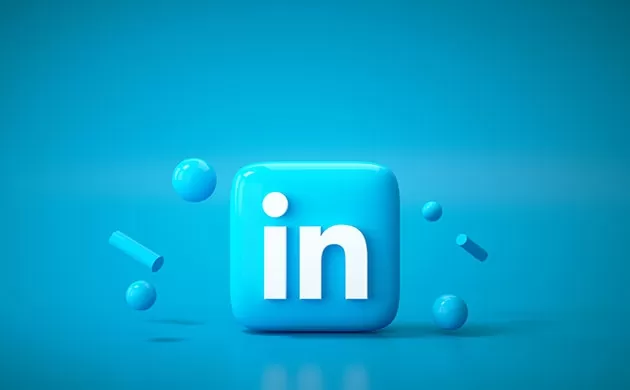12 Tips For Building A Great LinkedIn Profile has helped many new professionals start their careers by connecting them to the right employers. Experienced and intermediate white-collar professionals also rely on LinkedIn to look for higher-paying jobs. Some people have difficulty interacting with employers. It’s typically caused by providing insufficient details. Often, prospective employers aren’t interested in LinkedIn people with incomplete profiles. Here are some thoughts to support you improve your profile to be noticed:
1. Upload a professional profile picture
LinkedIn encourages newcomers to upload photos because it improves their standing with prospective employers. When HR managers stumble upon a blank LinkedIn account, they instantly conclude that the person doesn’t want to establish a network of career opportunities. A professional-looking profile image will allow you to distinguish yourself from candidates with no profile picture upload pictures of celebrities.
Don’t use selfies as your LinkedIn profile picture because prospective employers may assume that you don’t care. To get the most effective results, go to an experienced photography studio. Make sure you dress in professional clothes when you take your LinkedIn profile photo.
2. Indicate your current position
One common error made by LinkedIn users is not changing their profile information. It can cause the members to miss fantastic career growth opportunities. In addition, when potential employers see your profile and find out that you’ve been in the exact job for over five years, they may conclude that you don’t have the drive to develop your career.
The moment you update your current job, it will ensure that prospective employers can easily see your profile. Your profile will also appear authentic by confirming your resume with the information in the LinkedIn profile.
3. Complete all the information required under education
The section about education on your LinkedIn profile can help recruiters and prospective employers to determine your competence level. A few LinkedIn users don’t bother with this section since their resumes already include academic credentials. Human resource managers, however, prefer full LinkedIn profiles because they can access all the necessary information in a single glance.
Additionally, you can gain referrals from your fellow alums. LinkedIn utilizes various methods to connect professionals that attended the same universities and schools. Imagine the benefit you’ll get if a potential employer who was a student at the same institution you did can find your profile while looking through various job applications.
4. Indicate the industry that you are employed in.
Recruiters on LinkedIn utilize a variety of search filters when looking for the ideal candidates for jobs. One of these search criteria is industry. LinkedIn members who include accurate information about their industry in their profiles have the top search results. It gives them an advantage over other LinkedIn users who are better qualified for the position but aren’t listed in the search results by the recruiter.
Adjust your personal information about your field when you switch to a new field. It will allow you to find the appropriate people to recruit.
5. Please provide the correct address
Did you know that LinkedIn users who reveal their city or town of residence get 23 times more visibility in the results of searches? For instance, if the recruiter wants accountants who reside in Atlanta, Georgia, they would use the filter “location” to search for accountants who live in Atlanta. The correct geographic location gives you an advantage over professionals with experience, as recruiters only talk to candidates based on the results of their searches.
LinkedIn is also a platform that uses various algorithms that connect professionals in the same field and cities.
6. Check all the professional skills you have.
Recruiters assess potential employees based on their work experiences and skills. To stand out from peers, it is important to provide at least five relevant qualifications on the profile of your LinkedIn profile. By doing this, your profile will gain credibility with prospective employers. Employers also utilize skill-based parameters to filter their search for the right candidates to recruit in their local cities. Listing your professional expertise helps them see the advantages they will gain from hiring you.
LinkedIn permits users to complete changes to their list of professional expertise regularly. Make use of this segment to improve your profile in search results.
7. Highlight your accomplishments through your LinkedIn profile
Your profile is a fantastic way to present yourself to professional recruiters and others in your network with a glimpse of your services. Some LinkedIn members cannot provide the right impressions for prospective employers because they give unclear information. The result is that potential employers are with lack of clarity, and they then go to the next candidate.
You can impress hiring managers who see your profile by accurately describing your professional accomplishments. If you were a manager, it is possible to include a paragraph in your bio that reads, “I exceeded my previous company’s annual sales targets by 15% when I was in charge of a 10-member sales team.”
8. Make your LinkedIn portfolio
LinkedIn’s portfolio feature lets professionals demonstrate their expertise by uploading and sharing past projects with prospective employers. LinkedIn’s search engine prefers well-pocked portfolios since recruiters can precisely evaluate an applicant’s skills from previous performance. Portfolios eliminate prospective employers’ doubts about the references you’ve included in your profile.
Make sure you upload the best work on Your LinkedIn profile. Contact former employers and clients before uploading your portfolio to ensure they will be able to endorse your work whenever they receive an email or phone call from a prospective employer.
9. Be careful not to mention irrelevant employment information about your work
Do you feel overwhelmed when you look at the lengthy profile of a friend LinkedIn profile? Many professionals mistakenly believe that having a long resume can draw the attention of potential employers. They aren’t aware of is that employers are looking more for relevant professional experiences. If you’re a sales executive and a sales manager, it’s unnecessary to detail your previous experience as an accountant. Instead, it would be best if you informed prospective employers of your previous job in marketing when working for various businesses.
10. Make sure you seek out suggestions
Your LinkedIn profile functions as an additional version of your resume. The more reliable people you can have to endorse you and your profile, the greater the chance you’ll impress prospective employers. Recommendations can boost your credibility as recruiters can connect with LinkedIn users who have shared suggestions to your account.
One method to get positive reviews is by sending emails to former and friends of friends’ employers with hyperlinks on the LinkedIn profile. Ensure you send email follow-ups because certain recipients may not visit your profile.
11. Post status updates often.
Many LinkedIn users do not update their status on their LinkedIn profiles. Some people avoid this feature because they fear being mistaken by recruiters. However, using this feature frequently can do similar to having a well-stocked portfolio. Regular LinkedIn status updates let recruiters know you’re keen on the latest happenings in your industry. Additionally, it shows a degree of self-confidence that is well-received by potential customers.
Start by creating a monthly schedule that will allow you to publish regular and timely status updates. The next step is to research your industry’s current issues and write concise, insightful articles that offer exclusive information.
12. Include descriptive keywords in the headline of your profile
Recruiters on LinkedIn employ specific keywords when looking for specific professionals. LinkedIn sorts search results by the keywords related to those in the headlines of members’ profiles. It might seem acceptable to give your name as your official job title. But, many other members are using a similar description. The best method is to study what descriptive words recruiters type on LinkedIn’s search tool.
Finally, you can download an infographic posted on this blog titled “12 Tips to Make a LinkedIn Profile Employers Will Love,” which provides suggestions on how to improve your LinkedIn profile and outlines possible errors to avoid.
Digital Marketing , Social Media Marketing , Local SEO Marketing, Search Engine Optimization
12 Tips For Building A Great LinkedIn Profile




Leave a Reply